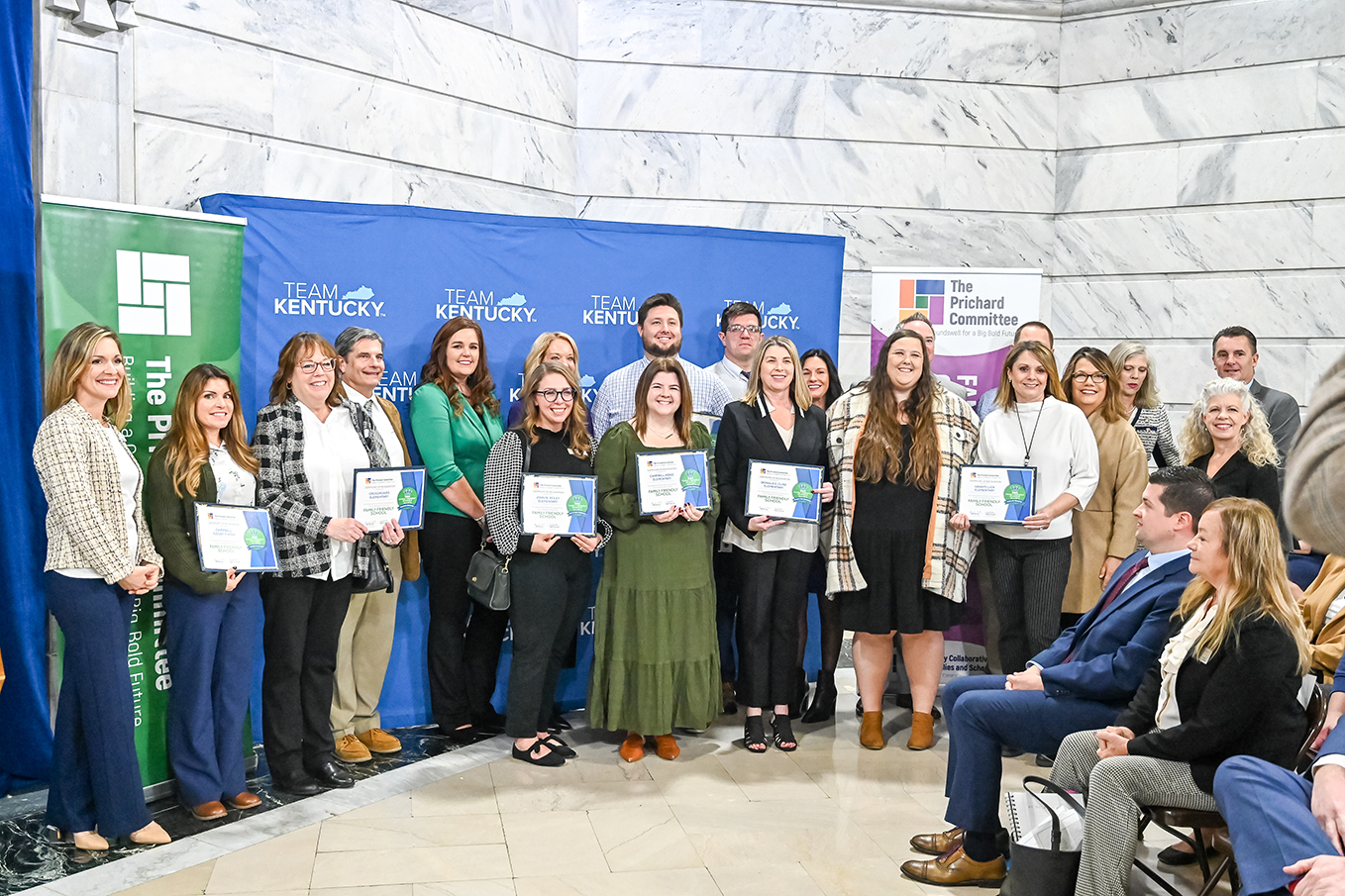
Andrew Beaver
By Andrew Beaver
Andrew.Beaver@jefferson.kyschools.us
Professional development is for new teachers still trying to develop their classroom management and instructional skills.
This was my honest opinion as a fourth-year middle school math teacher. I believed that I had survived the most challenging years of my career and that I was now, for the most part, an effective teacher. I had received high marks on my evaluation at the end of my third year. By the beginning of my fourth year, it seemed like most professional development that was being offered to me was about to manage my class, how to differentiate, how to analyze data, etc.
My assumption that I no longer needed professional development was also true for when our principal first introduced us to The Fundamental Five. If you’re not familiar with The Fundamental Five, it is simply a set of teaching practices that authors Sean Cain and Mike Laird say are essential for high-quality instruction, such as how to frame a lesson and how to have presence in a classroom. I attend the professional development that introduced the concept, but didn’t think too much about it until the building level walk-throughs primarily focused on observing the best practices outlined by The Fundamental Five.
When I got my feedback from the first walk-through, I realized that a lot of things I thought I was doing in the classroom, I was not doing, or at least not doing so consistently. This realization became a pivotal moment in my career. After all, I thought I was now an experienced and accomplished teacher. I equate this moment to thinking you are healthy when you go to a doctor, only to realize that you are not.
After much reflection, I realized I needed to change some of my classroom habits as a teacher. The procedures and practices I had in place had helped me to develop a well-managed classroom, but it was a classroom that limited student interactions with each other and limited the amount of critical thinking on the part of the students.
Since them, I have worked hard to change my classroom. I have sought answers to the following questions:
- How can I completely redesign my classroom and rethink how I function in the space of my classroom to maximize learning?
- How am I explaining learning targets and the frame of the lesson to students?
- Am I giving students positive and specific praise? Or am I only acknowledging the negative and giving broad praises like “good job today”?
- Am I writing lessons that included opportunities for students to write in mathematics?
- Do students have daily opportunities to work in groups to share and discuss their work and ideas on the learning target?
As I reflected on my teaching, I realized that I spent a lot more time behind my desk than when I was in my first year of teaching. I moved my workstation to the center of the classroom. I also redesigned the furniture so I could easily move between students and my workstation. With these simple adjustments, I quickly realized that I was now able to engage students easier and provide more frequent, actionable feedback that clarified student understanding.
Most teachers would agree that these changes are not necessarily revolutionary. But just like in the doctor’s office, most patients know what it takes to be healthy, but it doesn’t always mean they’re doing it. I went through the same thought process for transforming my classroom for the other questions that I asked myself.
I remember early in my career a principal saying, “motivating a first-year teacher is easy because they don’t know any better. It’s the teachers in their fourth, fifth, sixth and seventh years that are hard to motivate because they have had some success in the classroom and don’t see the need to change.” This is exactly what happened to me.
I had become a complacent teacher, a creature of the status quo. Fortunately, I had an administrative team that provided me with honest and frequent feedback. This was the wake-up call I needed to realize that professional development is an eternal endeavor. It’s just as important for experienced teachers as it is for new teachers.
In my fourth year, I learned that teacher development and growth never ends; my career is one of continuous improvement. Most teachers acknowledge that they must have a growth mindset to be effective, but experienced teachers don’t necessarily adopt this way of thinking. As teachers gain experience, some positive and some negative, it becomes easy to be complacent, especially in professional development sessions that are designed for newer teachers.
So my challenge to all teachers is to keep an open mind in all professional development settings. Seek out actionable feedback from your evaluators and peers. Reflect on the changes you make in your practice to get closer to meeting the needs of students and never stop striving for opportunities to grow as an educator.
Andrew Beaver is a seventh-year math teacher at Olmsted North Middle School in Louisville. He is an active member of Teacher Kentucky and a State Teacher Fellow for Hope Street Group. He received his bachelor’s in business from Indiana University, master’s in teaching from the University of Louisville and is a recent graduate of The Educational Leadership Program at Bellarmine University.




Complacency is so easy. It always helps me to read how teachers pull themselves out of it.